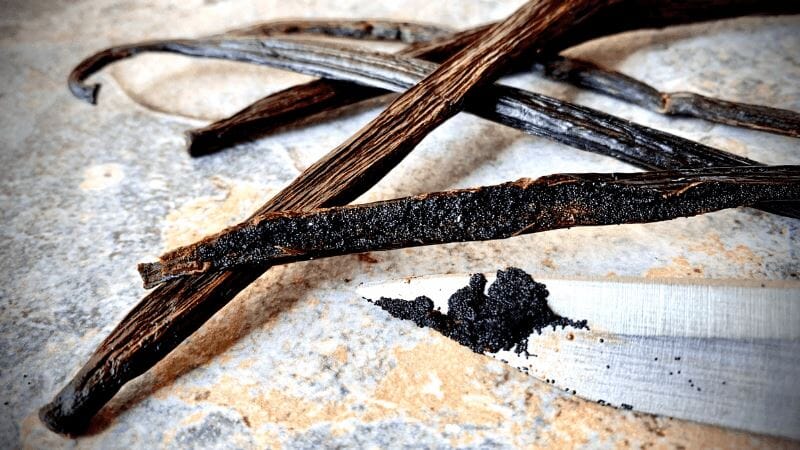How to Describe the Flavor of Vanilla Beans
Vanilla bean flavor—not as plain as you’d think
At some point in time, the word “vanilla” became synonymous with anything that is plain. A boring person is considered, “vanilla”, as is an uneventful occasion, a monotonous task, a lackluster outfit, and so-on. In our opinion, vanilla is anything but plain.
Really think about it. No two beans are exactly alike, whether you are referring to shape, size, scent, and certainly not flavor!
When it comes to the flavor of vanilla beans, we wanted to clear things up, in hopes of giving these phenomenal, flavor-filled beans the credit they deserve. So we will look at some of the most popular beans and outline their individual profiles and what brings out the various flavor properties in various types of vanilla.
Do different types of vanilla beans really taste that different? YES!
Why do different varieties of vanilla beans taste different?
You are probably well aware that wine and olive oil can span a long spectrum of palate piquing adjectives depending on the type of grapes or olives used, where and how they are grown, the care they are given, weather events for a given year, and how they are processed. The same is true for vanilla beans. The regions they are grown in have varying degrees of soil acidity, divergent weather patterns, differing cultivation and curing practices, and of course, there are different species of the vanilla orchid. Let’s examine the unique flavor properties of several of these species.
Shop Our Gourmet Grade-A & Grade-B Vanilla Beans
Vanilla Planifolia
By far, the most infamous type of vanilla, Planifolia beans are primarily sourced from Madagascar but are grown in tropical locations all over the world, including Papua New Guinea, Indonesia, Uganda, Ecuador, and many other places! They are often referred to as Bourbon vanilla, after an island off the coast of Madagascar formerly named the Réunion, Île Bourbon after the Bourbon Kings of France (where they were thought to have come from). As we mentioned earlier, because the soil, weather, cultivation, and curing processes differ from place-to-place, the depth and tones of flavor for each of these beans may be quite different, but the species, as a whole, has some stand-out traits. These beans, in large, are known for being almost cream-like, delicate and earthy, and typically have a subtle sweetness comparable to that of raisins. Some beans may express notes of smoke, butter, and even berries! We love using Planifolia in buttercreams, ice cream, and even savory cream sauces!
Tahitian Vanilla
Tahitian vanilla wasn’t hasn’t always been as widely recognized as it is today. Adored by high-end pastry chefs and the fragrance industry, these beans are characterized by their unmatched fragrance. The flavor tends to be much sweeter than other vanilla beans to the unique curing process used in Tahiti. It has distinctive notes of fruit and delicate flowers, which makes it stand out from other, more recognizable types of vanilla. Because of the the floral aspects of these beans, their caviar is an excellent choice for flavoring dishes containing fruit!
Pompona Vanilla Beans
Pompona vanilla beans are actually a variety of the Planifolia variety, but they definitely deserve their own category. Perhaps the matriarch of all other vanilla, these beans were the first vanilla beans ever documented during early Mexican explorations. They are highly-sought after, because of their strong, almost chocolatey richness, with hints of spiciness and deep tones reminiscent of oak and nutmeg. As such, you can imagine, one of the most popular uses for Mexican vanilla is as a flavoring agent in a comforting mug of hot chocolate!







Slofoodgroup
Author